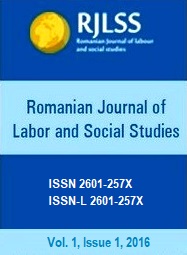Can internship program reduce unemployment among youth in a low job creation environment? The evidence from Macedonia
Can internship program reduce unemployment among youth in a low job creation environment? The evidence from Macedonia
Author(s): Nikica Mojsoska-Blazevski, Marjan PetreskiSubject(s): National Economy, Labor relations, Economic policy, Demography and human biology, Socio-Economic Research
Published by: Institutul Național de Cercetare Științifică în Domeniul Muncii și Protecției Sociale - INCSMPS
Keywords: impact evaluation; internship; unemployment; Macedonia;
Summary/Abstract: The aim of this paper is to assess the effectiveness of an internship program implemented in Macedonia, a country with high unemployment, as part of the active labour market programs. We evaluate two years of program implementation, as to see if some changes made to the program brought better effects. The key research question was whether participation in the internship program increased the probability of participants to find and retain gainful employment. However, in addition to this main outcome, we include other outcome variables such as: inactivity, unemployment, wages, changes in the prospects for employment after the program, changes in financial status, subjective labour market status, etc. To answer such questions (i.e. to assess the program outcomes) we employ a quasiexperimental impact evaluation method. The method, in essence, measures and compares the differences in labour market outcomes between those who participated in the programs (treatment group) and those who did not (control group). The evaluation (for both years) shows that the program is effective in terms of employment outcomes of the program participants, despite the low overall job creation in the country. Particularly, the program has no significant impact on the participants after the program end (meaning after the end of the internship), but has large positive effects on the subsequent employment. Similarly, the subjective employment is higher for the treatment group. The comparison between the program in 2010 and 2012 suggests that effects are similar, but of a higher magnitude in 2012, when an obligation was introduced for the participating employers to employ at least 50% of the participants. The 2012 program also found significant financial gains for participants, which is not the case with the 2010 program. The results from this analysis provide strong argument for policymakers for increasing the financing and the scale of the program in future years.
Journal: Romanian Journal of Labour and Social Studies (RJLSS) (online)
- Issue Year: 1/2016
- Issue No: 1
- Page Range: 22-52
- Page Count: 31
- Language: English

